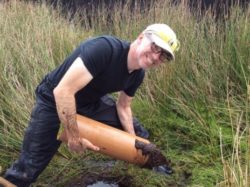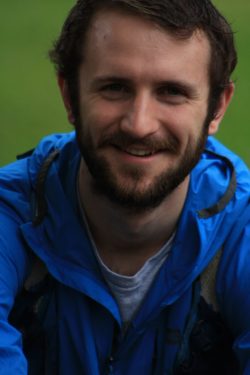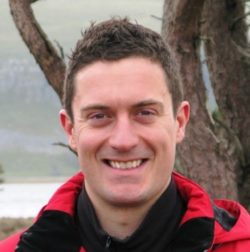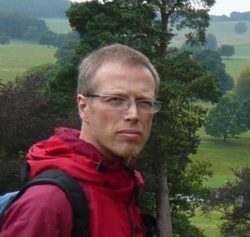Team
Professor Andy Baird
 Andy has worked in peatlands for over 30 years and has expertise in peatland ecohydrology, peatland carbon cycling and the modelling of peatland processes. He helped pioneer the development of new methods for measuring the hydraulic and thermal properties of peat, providing new insights on the functioning of peatlands. He has also investigated dynamics of biogenic gas bubbles in peats and their effect on water flow and methane release to the atmosphere.
Andy has worked in peatlands for over 30 years and has expertise in peatland ecohydrology, peatland carbon cycling and the modelling of peatland processes. He helped pioneer the development of new methods for measuring the hydraulic and thermal properties of peat, providing new insights on the functioning of peatlands. He has also investigated dynamics of biogenic gas bubbles in peats and their effect on water flow and methane release to the atmosphere.
Pete Gill

Pete’s work on DigiBog has focussed on two key elements of the model. Working on the full DigiBog, Pete introduced a new algorithm to the model code that has enabled the model to be run at much faster speeds. As a result, it has become possible to simulate peatland development over more complex and spatially extensive landscapes than was previously practicable. Pete is currently developing a user-friendly interface for DigiBog_Hydro so that the model is more accessible to non-modelling researchers and practitioners and can be readily used to plan and evaluate hydrological restoration projects. This work is part of a NERC iCASP project.
Dr Paul J. Morris

Paul has worked in peatlands since 2005, and is one of the original developers of the DigiBog model suite. Paul’s primary research interests focus on how peatlands respond to climate change at a range of timescales, and DigiBog has proved to be a useful tool to investigate this broad question. Paul is also interested in peatland hydrological processes.
Dr Dylan M. Young
 Dylan’s research has focussed mainly on how land use and restoration affect peat accumulation and peatland hydrology over decadal to centennial timescales. Although most monitoring in peatlands is limited to a few years or sometimes to decades, DigiBog can be used to explore the longer-term effects of land use and restoration. Dylan has worked on the development of the full DigiBog model incorporating plant functional types and different land uses into the model code.
Dylan’s research has focussed mainly on how land use and restoration affect peat accumulation and peatland hydrology over decadal to centennial timescales. Although most monitoring in peatlands is limited to a few years or sometimes to decades, DigiBog can be used to explore the longer-term effects of land use and restoration. Dylan has worked on the development of the full DigiBog model incorporating plant functional types and different land uses into the model code.
